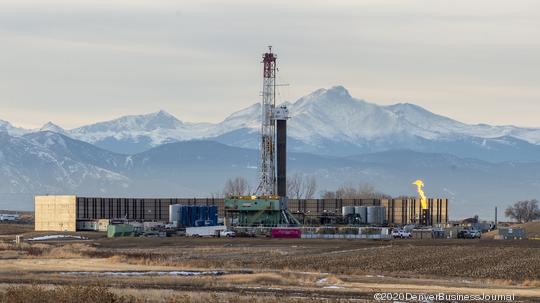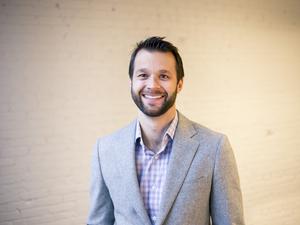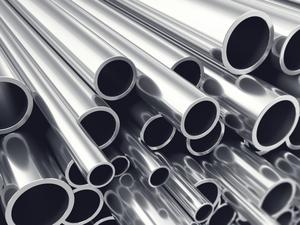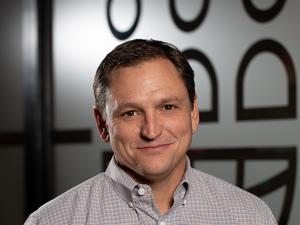
In his classes at the University of Texas at Arlington, Ali Farzbod teaches thermodynamics, explaining how climate change happens.
His work in the field has taken him to many places, including traveling across continents to earn a Ph.D. Those studies spurred an initial venture he created, which he ended after not finding the right market fit. And it is the work that eventually turned into a patent with new technology Farzbod is looking to commercialize in the hopes of addressing what he says is one of the most significant gaps in tackling climate change.
"For me, there are many problems that require to be addressed; that's why I'm an idea man. I always come up with solutions to problems," Farzbod told NTX Inno. "This one, I just see that it has the most demand… in terms of addressing this issue."
From skyscrapers to oil rigs, and even cell phones and the human body, heat is released into the atmosphere. Launched in May of last year, SeebeckCell Technologies looks to capture that heat and convert it into usable electricity.
The company takes its name from a scientific principle discovered in the late 1700s by Alessandro Volta that looks at the force of electrical currents created by temperature differences of a conductive material. Using an ionic-based liquid, SeebeckCell's technology converts heat loss from various sources that can be tailored to the voltage and current needs of wherever it is being applied.
The potential scalability of the technology has already begun to attract attention to the company. The technology is also lighter, more efficient and less expensive than other solid-state heat waste conversion devices on the market.
"The problem is not the heat coming into the environment that just goes for one percent of global warming," Farzbod, who serves as co-founder and CTO at SeebeckCell, said. "The problem is that wastage; we're just wasting energy."
From Tehran to cleantech
He got his bachelor's degree in aerospace engineering from the Amirkabir University of Technology in Tehran in 2012, following his UT Arlington education. When he arrived, advisors told him that being Iranian and focusing on aerospace, an industry that focused on commercial technology also developed for defense purposes, meant he should "forget about it" and switch his major.
He eventually received his Ph.D. in mechanical engineering, where his first brush with electrochemical sensors occurred.
"I started to get curious," Farzbod said.
While studying at UT Arlington, Farzbod began working with Dr. Hyejin Moon, an associate professor of mechanical and aerospace engineering. The research, backed by a nearly $410,000 grant from the National Science Foundation, focused on using fluids and sensors to analyze cells and tissues.
During that research, Farzbod said he became curious about applying some research to the energy industry rather than the health care industry. However, since an NSF grant funded the research, he was told he needed to stick to the original focus. But he couldn't shake the idea and asked Moon for some funding from the research lab's budget and began working in his spare time on the project. In the end, both areas of focus ended with patents.
"We started doing some experiments, and we found that there is a very good technology," Farzbod said." Then, it was time for me to graduate."
When he graduated, he went back to his old research, developing selective sensing microfluidity devices. Not long after, he launched Nano Liquid Solutions centered around the concept. The company was looking to commercialize a stand-alone device that could perform metabolic and lipid panels with a single drop of blood.
Unfortunately, around Nano Liquid's launch, Theranos, a company promising a similar technology valued at $10 billion at one point, went defunct. Its founder and the former president were charged by the SEC with fraud. The headlines that generated made finding investors difficult. And by the time the pandemic hit, Farzbod realized the market fit was not there, putting an end to Nano Liquid's operation.
"It is a bad crash, like a sugar crash," Farzbod said. "You get too hopped up on your business, and you realize that this is not going anywhere at this point."
His energy-focused work was in the back of his mind. Then, he got a call from Moon, telling him Rolls Royce and a couple of Canadian VC firms showed some interest in the patent he helped develop.
"I knew this tech had value, but I wanted to apply it somewhere that has real benefit, so the future, when I look at it, I wasn't just a mercenary with some knowledge; I did some good things," Farzbod said.
Stop the loss, start making a profit
With populations increasing, there is more demand for energy. And the infrastructure developed to sustain that means more heat loss from buildings and other projects.
Being in Texas, Farzbod first focused SeebeckCell on historically one of the state's biggest industries: oil and gas. While he said the heat produced from flaring is only a tiny contribution to the climate change problem, the amount of energy flare gases make each year is enough to match South America's gas consumption. SeebeckCell's technology would fit around flumes, capturing the emitted heat, converting it to electricity and then storing it to power other things or be released back into the grid.
"There's a huge demand from upstream to downstream. Everywhere, they are losing heat," Farzbod said.
While Farzbod said the oil and gas businesses likely produce all energy they need, as the U.S. looks to enact stricter regulations and invest in more green technologies, he sees SeebeckCell's potential to help lower the company's emissions. However, he also noted that with the volatility in oil price, it's not the only industry he wants to focus on.
"We have this saying in Persian: whenever you stop the loss, you start making a profit," Farzbod said.
So, he turned to a growing industry in North Texas: data centers and crypto mining. According to The New York Times, mining cryptocurrencies like Bitcoin uses more energy than any other type of financial transaction, releasing more carbon annually as an industry than all of the carbon emitted by New Zealand. With Texas having the density of data center infrastructure and plenty of land to expand on, it quickly becomes a hub for blockchain technologies.
In crypto mining centers, SeebeckCell's technology would use the heat emitted from computers and the cooling agents' temperature difference needed to keep the computers running to generate more electricity.
Farzbod also said he sees a way to bring the climate-impacting industries – energy and crypto mining – using the excess heat generated by oil and gas producers to create electricity to power mining facilities, reducing emissions.
"We saw that there was this synergy between oil and Bitcoin mining. Most of the time, the oil field they don't need that power. They already have enough … so what we wanted to offer was create this joint partnership," Farzbod said. "That creates a more sustainable economy, and that's something that some startups are already doing."
Launched less than a year ago, SeebeckCell has already been gaining traction. Last year, the company shared a $20,000 in-kind prize at the Rice Business Plan Competition and was accepted into Capital Factory's VIP Accelerator program. In addition to investments from Farzbod himself and investments from UT Arlington, who holds the patent on the technology, SeebeckCell is in the process of applying for federal defense grants to look at using the technology to capture the heat produced from soldier's bodies.
Phase II: finding funding
Farzbod sees multiple ways SeebeckCell's technology could be applied to different industries, given the fluid it uses is synthesized in a lab, and the device can be custom-built for various needs. However, like with many commercialization efforts, finding funding stands in the way.
The company already has two working prototypes and works on building out its first module to harvest heat. It also has in talks with blockchain companies looking to go green. But, looking ahead, Phase II will focus heavily on applying the technology to the electric vehicle market, helping capture emitted heat and returning it to the battery for extra life.
"We are ready to build our first module, which is ready for harvesting in terms of casing and all that," Farzbod said.
To get there, SeebeckCell is launching a $1 million convertible note seed round in the next couple of weeks, which Farzbod said has already begun to attract some investors. However, finding investors in sustainable technology is not always easy.
In a paper, Ari Ginsberg, professor of entrepreneurship and management at New York University, and Alfred Marcus, a professor of strategic management and entrepreneurship, note VC firms are often not heavily focused on clean energy technologies, mainly because of the heavy amount of upfront investment in R&D work many companies in the space required, as well as the time it takes to see a significant return on investments. That has been changing recently with people like Bill Gates and the firm KKR creating billion-dollar impact funds focused on the clean energy industry.
"Maybe two years ago or a year ago, if you asked me, I would say nobody cared that much about sustainability. Even if they did a deal… they wanted to get good PR," Farzbod said. "At this point, I think the smart ones want to invest in sustainability because they know the trend will be towards that. That is something that is not going to change."
One of the trends driving this is consumer demand for companies to have more sustainable, clean practices.
"People realize it is global; everybody affects each other," Farzbod said. "I think people realize… if we don't address it, then nobody can solve it."
Farzbod said the pandemic had had another effect when it comes to investing. Before the crisis, he said it could take weeks to get in with the right investor. But now, with more people working from home, he said it has been easier to land video meetings more quickly. With that, and with the end of Nano Liquid Solutions still fresh in his mind, Farzbod said he is cautiously optimistic SeebeckCell has the potential to make real change for the better.
"I see this need, and there are many other solutions to addressing climate change, but I personally teach thermodynamics… you basically teach them how an engine works, how climate change actually happens," Farzbod said.







